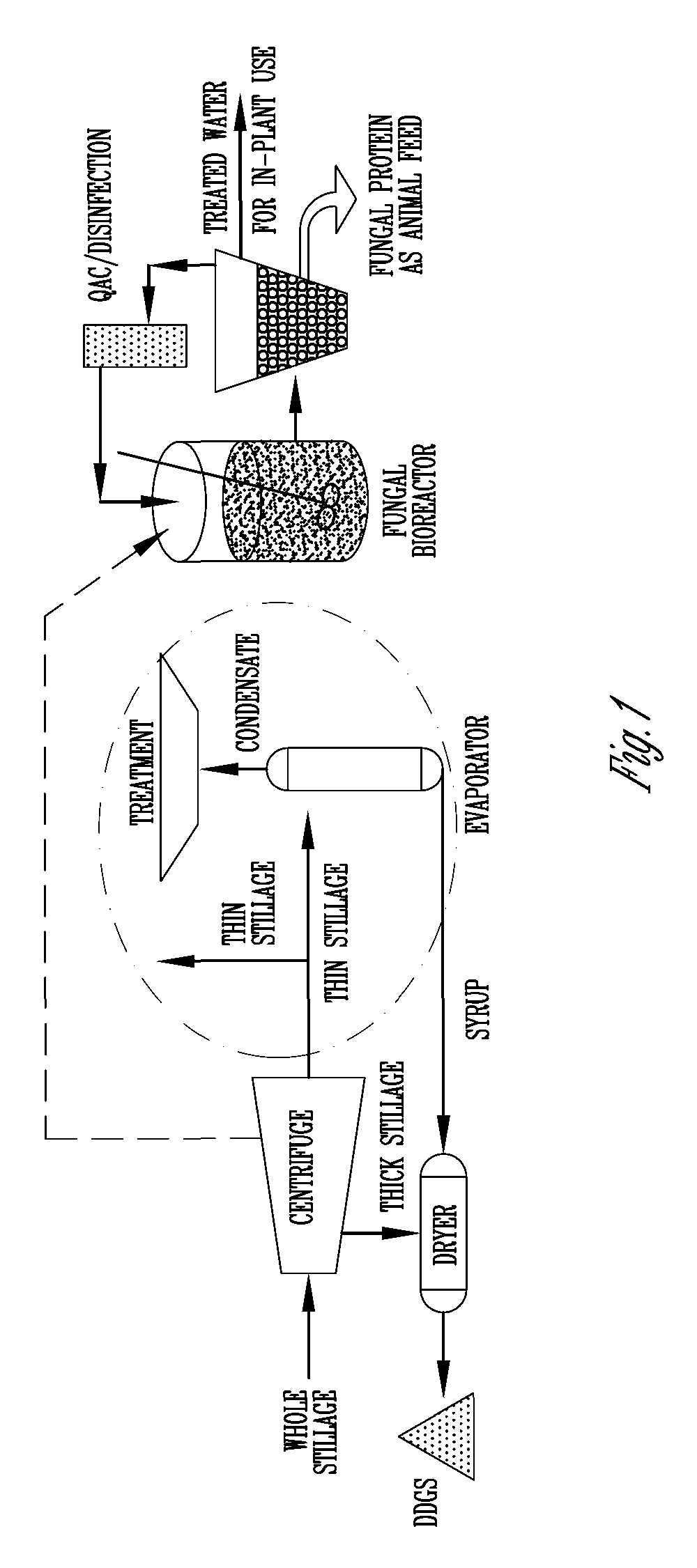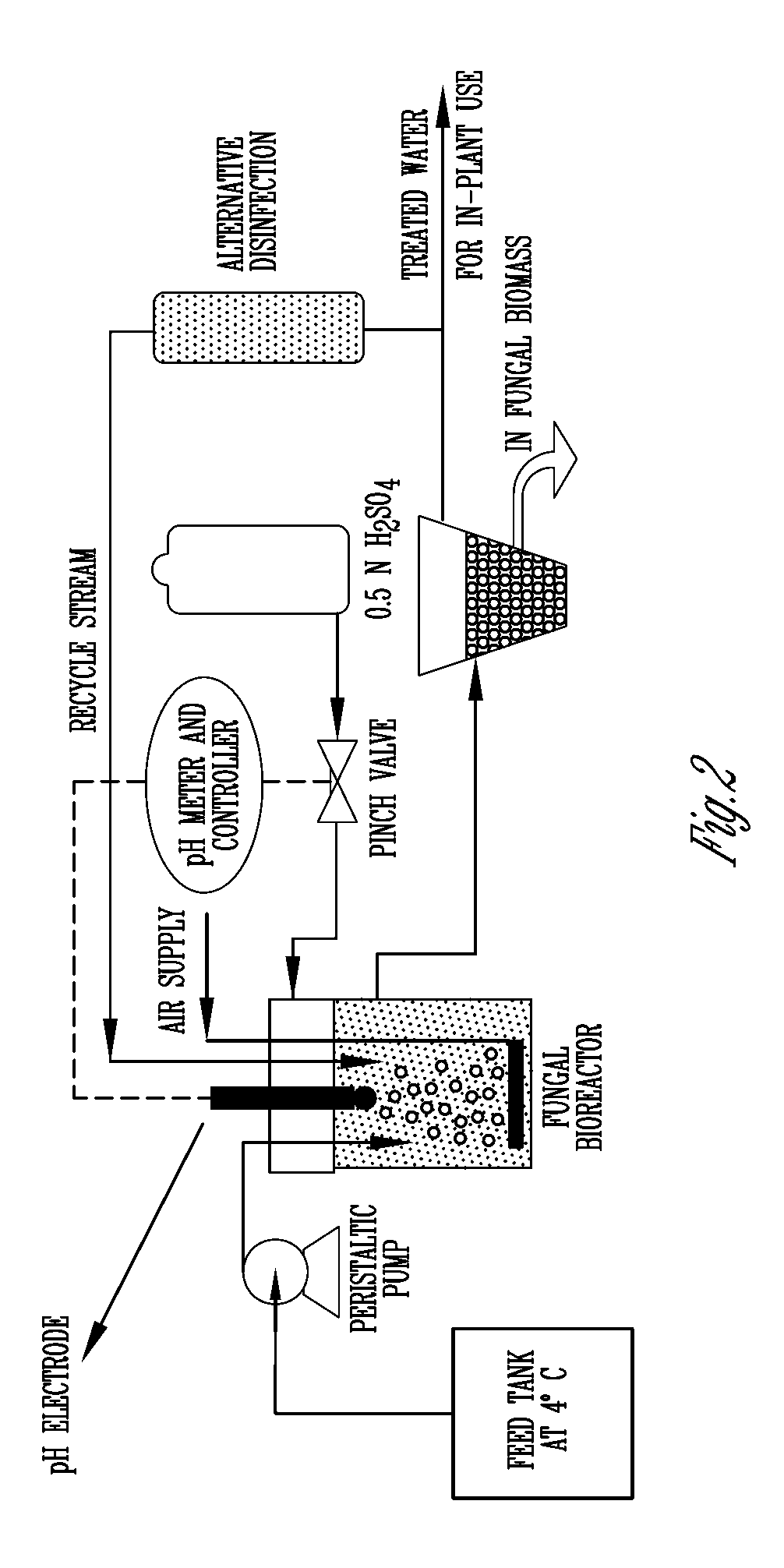Purification of thin stillage from dry-grind corn milling with fungi
a technology of dry grinding corn and fungi, applied in the direction of microorganisms, biological water/sewage treatment, water/sewage treatment by oxidation, etc., can solve the problems of fungal protein formation in treated water and achieve the effect of high nutrient conten
- Summary
- Abstract
- Description
- Claims
- Application Information
AI Technical Summary
Benefits of technology
Problems solved by technology
Method used
Image
Examples
example 1
Fungal Treatment of Thin Stillage
Proposed Research and Deliverables
[0038]Task 1 Development of fungal bioreactor: Rhizopus sp. will be cultivated continuously in a suspended growth bioreactor using thin stillage as substrate. Oxygen demand is the main limiting factor and means of speeding up air supply, such as an airlift reactor will be developed.[0039]Task 2 Optimization of fungal bioreactor operation: The fungal bioreactor will be operated at retention times of 24-96 hours and different rates of air supply. The operating pH and temperature of the bioreactor will be maintained at 4.0 and 38° C., respectively, already found optimal for fungal growth. Fortuitously, thin stillage is produced at a pH 4.0-4.5 and a temperature of 50-60° C. The combinations of parameters with maximum organic removal and fungal yield will be chosen. Harvesting will be developed.[0040]Task 3 Water disinfection: Effluent from the fungal reactor may need removal of competitive bacteria. Immobilized QAC will...
example 2
Fungal Treatment of Thin Stillage
[0045]Task 1 Fungal bioreactor start-up and operation: Two species of micro-fungi, namely Rhizopus oligosporus (Jin et al., 1999a; 1999b) and Mucor indicus, will be selected for this study because of their ability to degrade high strength organic wastewater, to produce a high fungal biomass yield and the desirable biochemical chitosan respectively. Two airlift fungal bioreactors of 17 L working volume are being built. The first will be seeded aseptically with 2, 2-ml cryo-vials of pure mold culture of Mucor sp., whereas the other one will be seeded with two, 2-ml cryo-vials of Rhizopus sp. These species will be obtained from commercial stock culture collections and will be cultivated continuously initially using potato dextrose broth, which is a favorable growth medium for these molds. A schematic of the reactor set-up is shown in FIG. 2. The thin stillage will be stored at 4° C. and pumped to the bioreactor to maintain a hydraulic retention time (HR...
PUM
| Property | Measurement | Unit |
|---|---|---|
| temperature | aaaaa | aaaaa |
| temperature | aaaaa | aaaaa |
| hydraulic retention time | aaaaa | aaaaa |
Abstract
Description
Claims
Application Information
 Login to View More
Login to View More - R&D
- Intellectual Property
- Life Sciences
- Materials
- Tech Scout
- Unparalleled Data Quality
- Higher Quality Content
- 60% Fewer Hallucinations
Browse by: Latest US Patents, China's latest patents, Technical Efficacy Thesaurus, Application Domain, Technology Topic, Popular Technical Reports.
© 2025 PatSnap. All rights reserved.Legal|Privacy policy|Modern Slavery Act Transparency Statement|Sitemap|About US| Contact US: help@patsnap.com


